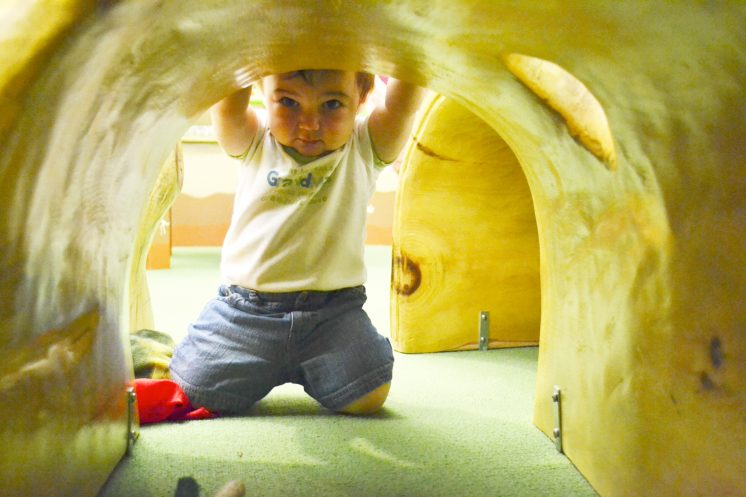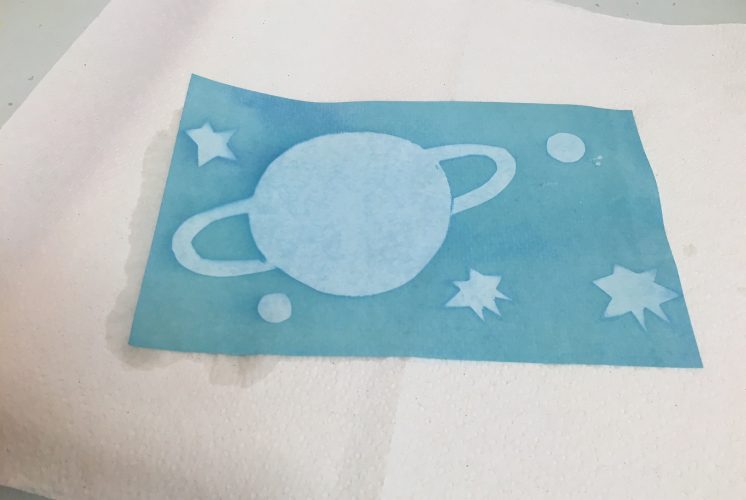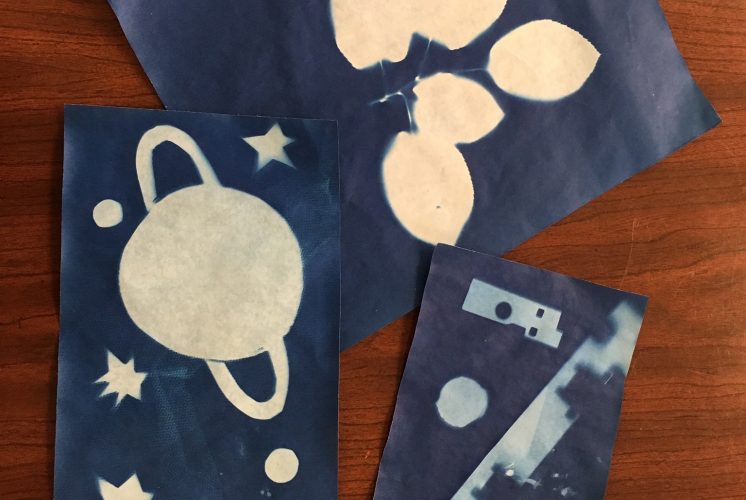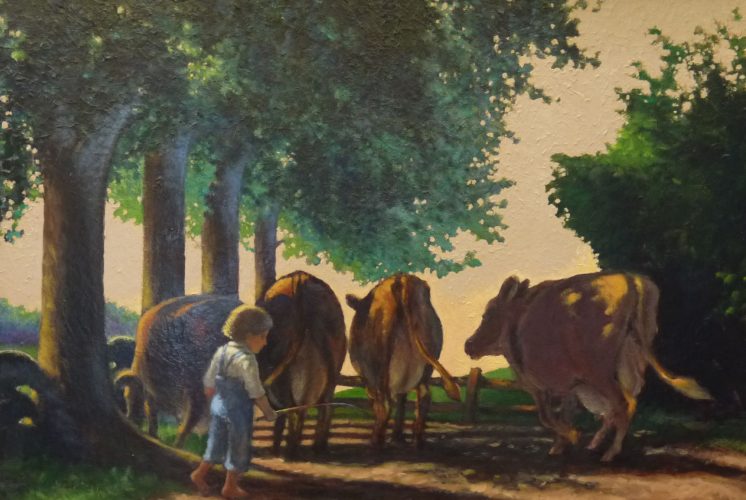The Museum Blog
Category: Learning
Reflecting on my Summer Internship at CMNH
It's time to start thinking about summer internships. Read on to hear what this former intern had to say about her internship at the Children's Museum of New Hampshire.
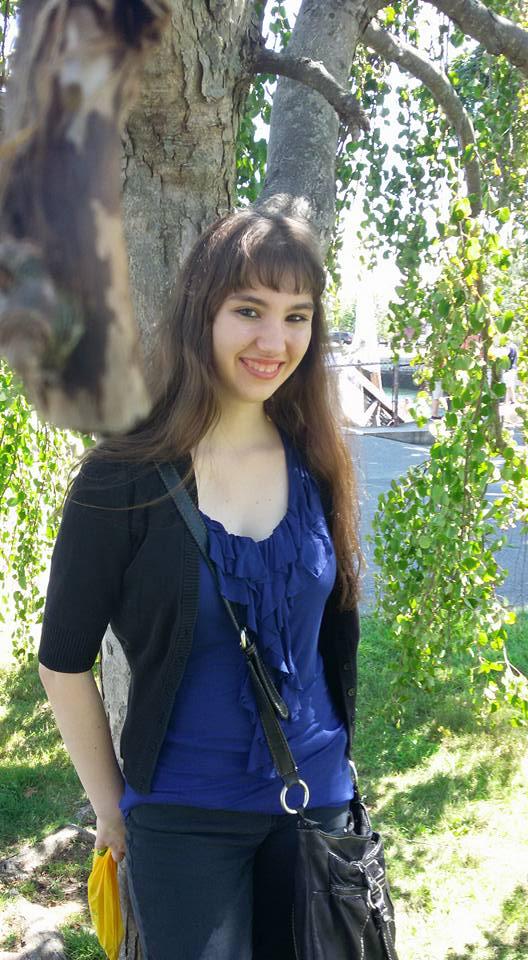 By: Amanda Girard
By: Amanda Girard
I remember visiting the Children’s Museum in Portsmouth when I was younger. I remember playing in the Yellow Submarine and the fishing boat and creating works of art in what is now known as the Muse Studio. I had a lot of really great memories there.
That younger version of myself could’ve never imagined that one day I would return here as an intern and spend a summer here. Yet, here I am on both the last day of my internship and my 20th birthday!
I have really enjoyed my time at CMNH and I have successfully completed so many projects that I am proud of. I am going to college for a degree in Professional Writing with a minor in Marketing and I really have combined the two in this internship with the Marketing department.
I had a few projects that spanned the length of my entire internship (From Mid-May to the beginning of August). I wrote biographies for all of the over 50 Makers who will be part of the 2015Dover Mini Maker Faire. I had never even heard of Maker Faire until I started to work here and I think it’s just an amazing idea that will only grow as time goes on. As I was writing the biographies, I would always get excited and wound up wishing that I could be around when it happens, as I will be studying abroad in Dublin at the time. Nevertheless, I am proud that I could be a part of getting people excited for Maker Faire this year!
I also worked for a majority of the summer interviewing office staff, museum educators, and volunteers for “Meet the Staff” blog posts for this blog. I enjoyed this project a lot because I got to meet many of the wonderful staff at the Children’s Museum. Everyone here is so kind and friendly and just a lot of fun! I got to experience what it is like to work in an office setting and I saw first-hand how a group of people with many different talents can come together for a common goal: in this case, to provide an amazing experience for children and their families.
Speaking of children and their families, I got to read what they thought of CMNH firsthand with another one of my ongoing projects. One of the first things that I did in the mornings when I arrived for work was check to see if there were any new visitor surveys. I gathered almost 40 surveys over the course of the summer and compiled them. Some outcomes of this were a tally of visitor’s favorite exhibits (with the Yellow Submarine at the top of the list!) and two blog posts about what the Museum offers to older kids and how our exhibits help toddlers learn through repetition.
Other things that I accomplished during my time here include writing tweets and Facebook posts (some things that I had never really tried before!), covering events like Group Visits and the Teddy Bear Clinic and Picnic, crafting emails, tracking visitor zip codes and writing press releases for Museum events and classes.
So what have I learned from doing all of this? Well, I’ve learned another way that I can use my writing in the future and I’ve learned the basics of marketing and social media outreach. I’ve learned about the amount of research that goes into marketing a company and a brand and I’ve learned that I actually really love doing that research! I have also learned what it’s like to work in an office and how to coordinate and work together to accomplish a goal.
But the biggest thing I think I’ve learned, that I already sort of knew, was that I really like working with children and seeing their reactions of joy and excitement when they see the finished product of something we have all worked so hard to create for them. I think that that is an interest that I would really like to pursue further and I’m not sure where that will lead me. But interning at CMNH this summer solidified that the interest is there and who knows where that will lead me in the future!
I am extremely thankful for the opportunity and experience that I have had at the Children’s Museum of New Hampshire this summer and for every amazing person that I have gotten the chance to meet in the process!
Un MOSAICO de Culturas
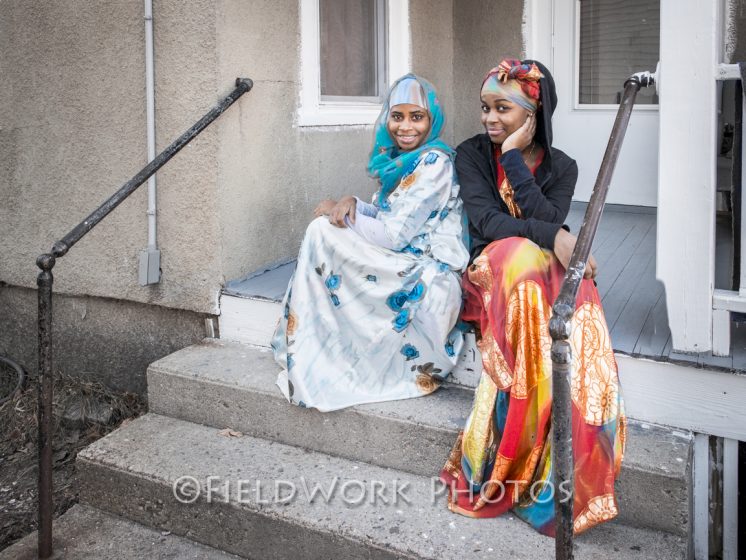
Becky Fields, "Somali Cousins, Manchester, 2013"
Un MOSAICO de Culturas para ser Exploradas en el Museo del Niño de New Hampshire
Galería 6, el espacio reservado para el arte en el Museo del Niño de New Hampshire, tendrá la apertura de una nueva exhibición el 5 de marzo, y presentará el arte de diversas culturas. MOSAICO: Explorando nuestra comunidad Multicultural, simultáneamente llevará a cabo una celebración especial de la exploración cultural, el sábado 12 de marzo, en donde los asistentes podrán degustar la cocina del Norte de África, disfrutar el baile y la música tradicional de Bután, probar sus destrezas con el pincel en la pintura China y formar parte de un proyecto de arte comunitario.
El arte visto en MOSAICO incluirá fotografías de inmigrantes y refugiados que viven en New Hampshire tomadas del libro Raíces Diferentes, Sueños en Común de Becky Field, el cual salió en el otoño del 2015. El fotógrafo David Hiley, quien viajó a Haití con un grupo del litoral, profesionales médicos voluntarios de NH en coordinación con la Fundación Sanitara de Haití, presentarán las series ‘selfies’ de niños y padres Haitianos. “Me llamo la atención lo que vi entre la desgarradora pobreza y la vitalidad y dignidad de esos niños”, “comentó David”. “Permitiendo capturar la curiosidad y alegría en común que todos los niños tenían por todas partes”. Asimismo serán expuestas fotografías de niños de China, tomadas por el pediatra jubilado Skip Small y se vislumbrará la vida de un niño de Japón capturado por Sayaka y Seth Blewitt. También estarán en muestra muñecas de alrededor del mundo seleccionadas de la colección del Museo.
La celebración especial de MOSAICO, promete ser tan diversa como las culturas presentadas en el arte mismo. El evento se llevará a cabo de 11am-2pm el sábado 12 de marzo en el Museo del Niño de New Hampshire en Dover. Los asistentes que vengan en sus trajes típicos (disfraces de superhéroes y princesas no aplican) pagarán la mitad en su admisión individual. De 10:45 am-a mediodía el chef Patrice Gerard capacitado en Europa, hará una demostración de la cocina del Norte de África y los invitados podrán degustar su tajine vegetariana con cuscús. Becky Field estará accesible para hablar de su proyecto fotográfico y su trabajo de documentación cultural, étnico y la diversidad religiosa en NH. A las 11:30am y 1pm bailarines de Bután harán una demostración de su baile y de su música tradicional en el Estudio Muse. David Hiley caminará alrededor del Museo tomando “selfies” a los invitados que vengan vestidos con sus trajes típicos. Runjuan Huang hará una demostración de la pintura China con pincel y los asistentes podrán también intentar hacerlo o ayudar a crear el proyecto comunitario, el cual, una vez completado será colocado en el exterior de Museo del Niño. La apertura de la celebración de los eventos son gratuitos con su admisión regular del museo.
La exhibición MOSAICO estará a la vista hasta el martes, 13 de mayo y es patrocinada por Optima Bank and Trust, el Consejo Estatal de Artes de New Hampshire y la Fundación Fuller. Además de la exposición de arte y la celebración especial, cada dos semanas los educadores del Museo harán manualidades y actividades culturales de diferentes países en el estudio Muse. Los países, en orden de aparición, incluirán Tanzania, Perú, Haití, Islandia, Japón , Pakistán y Canadá. A Finales de mayo, proyectos y situaciones acerca de los 7 países estarán juntos en exhibición en el Estudio Muse.
Family Literacy Month Kick-Off
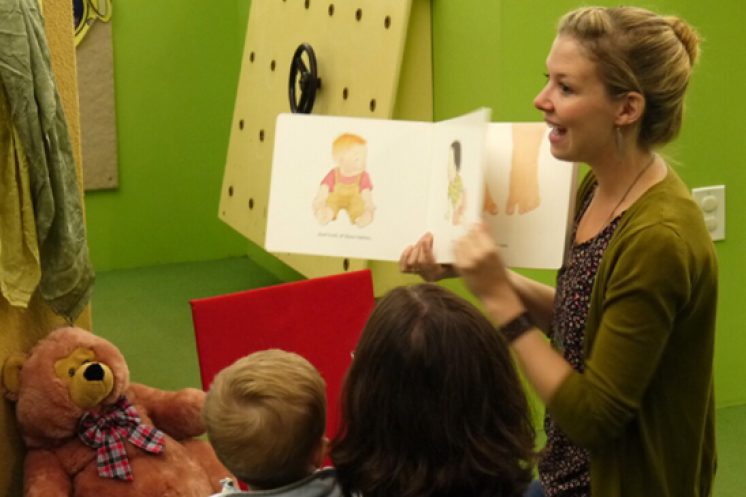
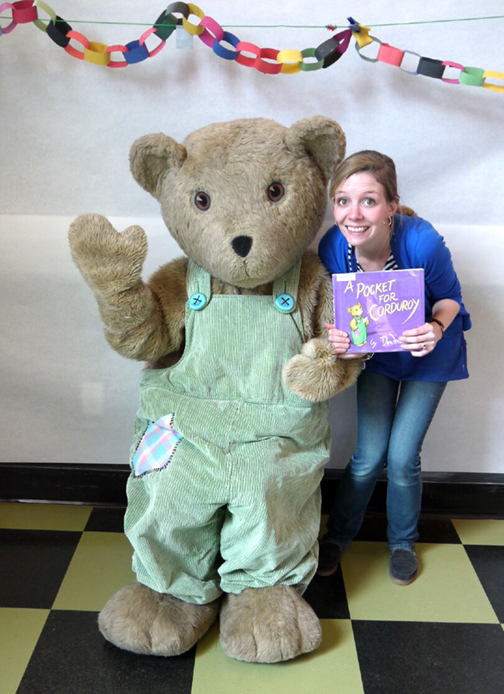 By Meredith Lamothe
By Meredith Lamothe
We’re always excited about literacy here at The Children’s Museum of New Hampshire. Sure, we were thrilled that we were going to celebrate Family Literacy Month this November, but really—we focus on literacy all the time!
We recently hosted a well-attended Jumpstart To Read event; we host Books Alive! events several times a year where costumed characters bring favorite stories to life, and we have weekly Baby Storytimes as part of First Friends Playgroup, where we can teach early literacy skills to the caretakers of our youngest visitors. So a whole month dedicated to literacy? It was a no brainer!
What does family literacy month mean at CMNH?
It means that we’ll have literacy tips posted around that you can peruse as you play. We’ll have multiple activities throughout the week that highlight literacy—and how easy it is to promote and explore at home. We’ve also made up some great handouts, have several guest speakers planned, and will have weekly crafts and games in our Muse Studio—all related to literacy!
We also have our museum. Our museum is a literacy gold mine! Literacy goes so far beyond reading books. Yes, that’s an important part—but literacy, specifically family literacy, is so easy to incorporate into your daily life—or your museum visit!
When you’re playing with your kids in the submarine—make it a story. Does that story have a beginning, middle and end? DING DING DING! LITERACY ALERT! Choose a favorite color when you walk in the museum and then as you play, find that color in each of the exhibits! DING DING DING! Visit the Muse Studio and have your child explain to you the steps they’re taking in making a craft or playing with the magnet table! DING DING DING!
Any conversation, any question, any exploration can easily be made into a rewarding literacy experience. If you have questions, we’re happy to help.
We’re always excited about literacy!
About the Author: Lead Educator Meredith Lamothe has always been a book nerd, library lover and fan of acting out and telling silly stories. She has a blast hosting the Museum’s weekly First Friends Playgroup and has her Master’s Degree in Library and Information Science with a focus in Children’s Programming from Simmons College.
Here Comes the Sun
By Sarah Terry
Well, I am thrilled to report that the first session of our inaugural Maker Club at Woodman Park Elementary went wonderfully! It was so much fun, the kids are a blast to work with, and by the end of the hour, we had ten working Artbots bumping their ways around the room! One of our second grade students told her teacher afterwards, “You know, I never thought I would ever make a robot... and then I did!”
We had three-legged ArtBots, four-legged ArtBots, double ArtBots, BotBots (bots without marker legs, of course!), and more! It was quite the buzzy creative party!
And there's only one way for a Maker Club to celebrate this success... by making more stuff!
 Our next hands-on project involves one of my favorite ways to combine art and science – photography! I'm probably on the edge of the last generation that remembers using film cameras. I was just getting old enough to learn how to load the film myself when digital cameras became popular and quickly took hold of the market. Digital cameras are fascinating in their own right and have made photography more accessible than ever, but my mother is a photographer and I'll always have a soft spot for film... and the chemistry you can learn by understanding how it works!
Our next hands-on project involves one of my favorite ways to combine art and science – photography! I'm probably on the edge of the last generation that remembers using film cameras. I was just getting old enough to learn how to load the film myself when digital cameras became popular and quickly took hold of the market. Digital cameras are fascinating in their own right and have made photography more accessible than ever, but my mother is a photographer and I'll always have a soft spot for film... and the chemistry you can learn by understanding how it works!
There are many types of film that use different chemicals to capture different colors of light, but we're going to be working with cyanotypes!
Cyanotypes, sometimes called sun prints, were invented in 1842 by Sir John Herschel. Does that name sound familiar? Herschel's father William is the man who discovered Uranus! John Herschel continued his father's work in astronomy – he named seven of the moons of Saturn, and four moons of Uranus – but he also made large contributions to the field of photography.
Cyanotypes were originally used to reproduce notes and diagrams (their bright color is where we get the term blueprint from!). The first person to use the process to make photographs was Anna Atkins, an English botanist and friend of John Herschel. She is considered by some to be the first female photographer! She used the process to document different kinds of algae and seaweed, and published a book called (fittingly), Photographs of British Algae: Cyanotype Impressions. Technically, what Atkins created were photograms. Photograms are made by contact printing – she put pieces of algae directly on the paper and exposed it to create her images!
We're going to be making some photograms of our own today!
Now, I bought already-treated cyanotype paper film, but you can actually make the film yourself! This process involves chemicals, so you'd want to make sure you have goggles, gloves, a mask and a well-ventilated area to work in! This article documents the process, and the supplies you'd need.
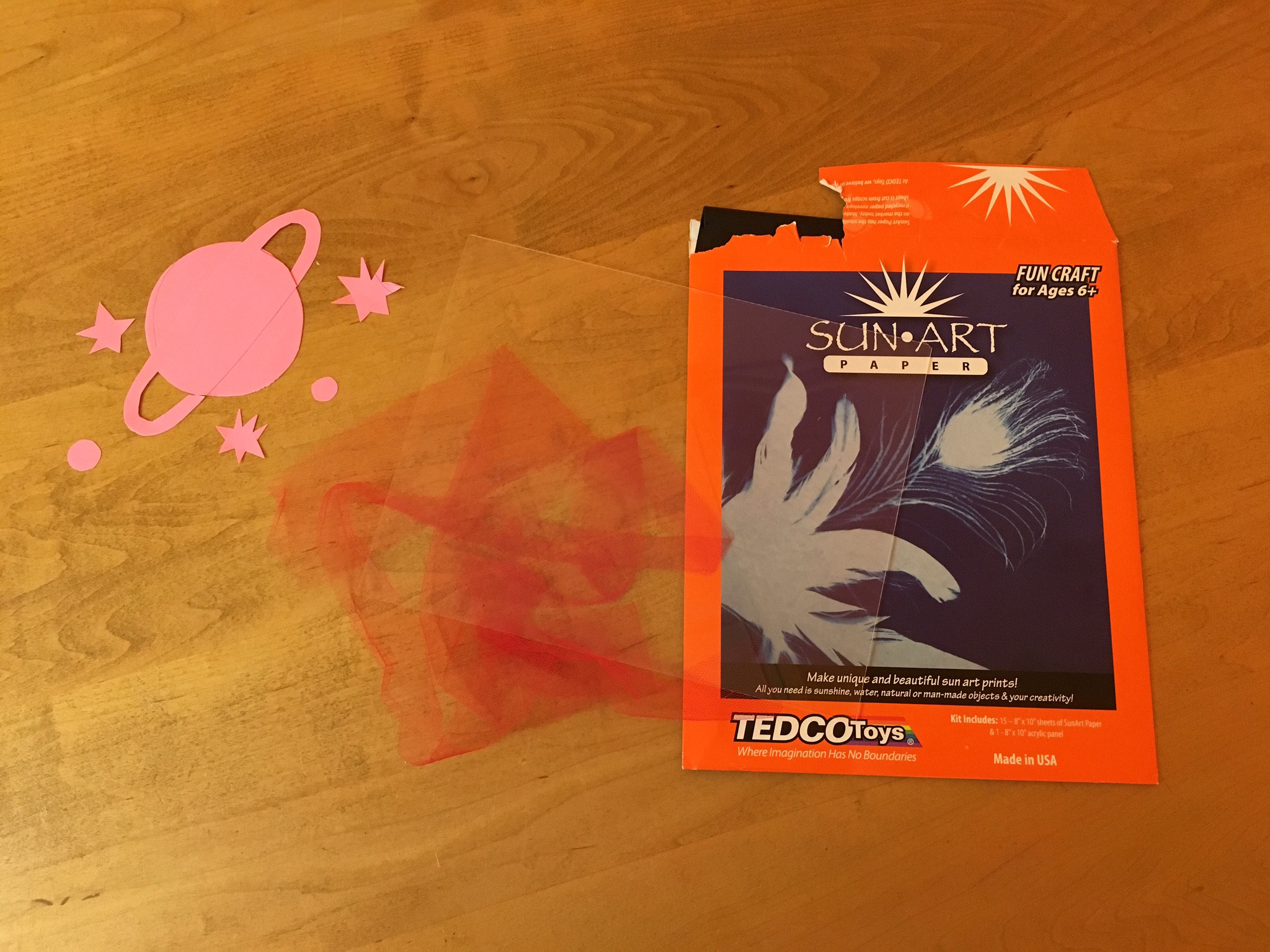 Materials:
Materials:
- Sunprint paper
- Supplies to make your image. Now this could be all kinds of materials – I cut designs out of paper, and used some mesh, but you can use leaves, shells, Legos, anything you think has a cool outline!
- Plexiglass sheet
- Plastic bin
- Vinegar (or lemon juice!)
- Water
Now cyanotypes are made through a chemical reaction with UV or ultraviolet light! The chemicals in the paper – ammonium iron (iii) citrate and potassium ferricyanide – react with UV light to create an insoluble blue dye! Then you develop the film in water and a little vinegar, and your print is finished!
To begin, make sure that you are in a room where sunlight can't reach you! You don't want any UV light to touch your print before you're ready. Luckily, indoor lights aren't powerful enough to produce ultraviolet light, so you don't need to work in a darkroom, like you would for ordinary film.
Get the complete step-by-step instructions here in a handy dandy printable PDF
Check out this video to see the process in action!
"Of Beauty and Beasts" Illustrator Interviews
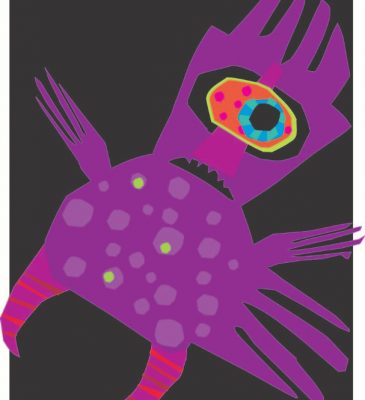 The illustrators from the summer 2015 Gallery 6 exhibition "Of Beauties and Beasts" answered some of our questions about their style of illustrating, from where they get their inspiration and more! The exhibit is on view in the Children's Museum of New Hampshire through Sunday, September 6.
The illustrators from the summer 2015 Gallery 6 exhibition "Of Beauties and Beasts" answered some of our questions about their style of illustrating, from where they get their inspiration and more! The exhibit is on view in the Children's Museum of New Hampshire through Sunday, September 6.
Rebecca Emberley
Q. Your beasts from Ten Little Beasties are such great combinations of fangs and fur. Did the process of collage allow for some fun experimenting when creating these creatures?
A. Collage is a very forgiving art form and allows for lots of experimentation in any genre, but beasts are particularly fun! There are no limits to fangs, scales and horns!
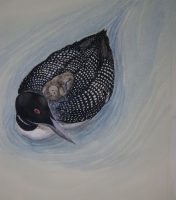 Karel Hayes
Karel Hayes
Q. In what way have your own favorite childhood books influenced you art today?
A. One of my favorite books from my childhood was a 1932 edition of Robert Lewis Stevenson's A Child's Garden of Verses. I found it in a second hand bookstore when I was about ten years old. Second hand bookstores were favorite places for my family to visit. I was first attracted to the book by the wonderful watercolors by Juanita C. Bennett. She was not as well-known as Jessie Wilcox Smith, but I think her work rivaled that well-know artist.
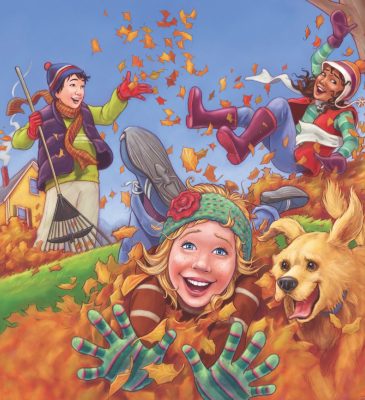 Robert Squier
Robert Squier
Q. Your illustrations are done in “digital media” but the results look very traditional. What inspired your style of illustration?
A. I'd like to think my illustration style is still evolving! My earliest influences were Marvel comics and MAD magazine. When I started working professionally, I worked as a freelance commercial illustrator; that required me to be a chameleon, adapting my style to many different clients' needs.
When I made the transition to illustrating for children, I concentrated on traditional media like watercolor, acrylics and color pencil. I started working digitally out of necessity. Many of the projects I was working on required speed and flexibility – a digital illustration is easier to edit than an acrylic painting. My earliest digital work looked "computery," but over time I've learned to work in a manner that looks more traditional. I prefer a more traditional look because it allows me to bring in the texture, layers of color, and lively line that I developed during years of working in traditional media. But doing the work digitally allows me to work more quickly and allows for easier editing.
For most pieces, my process includes both digital and traditional techniques. For example, I might do a pencil sketch, scan it, tweak it on the computer, print it out, add shading and texture to the printout using an ink wash, scan it again, and then add color and additional texture on the computer.
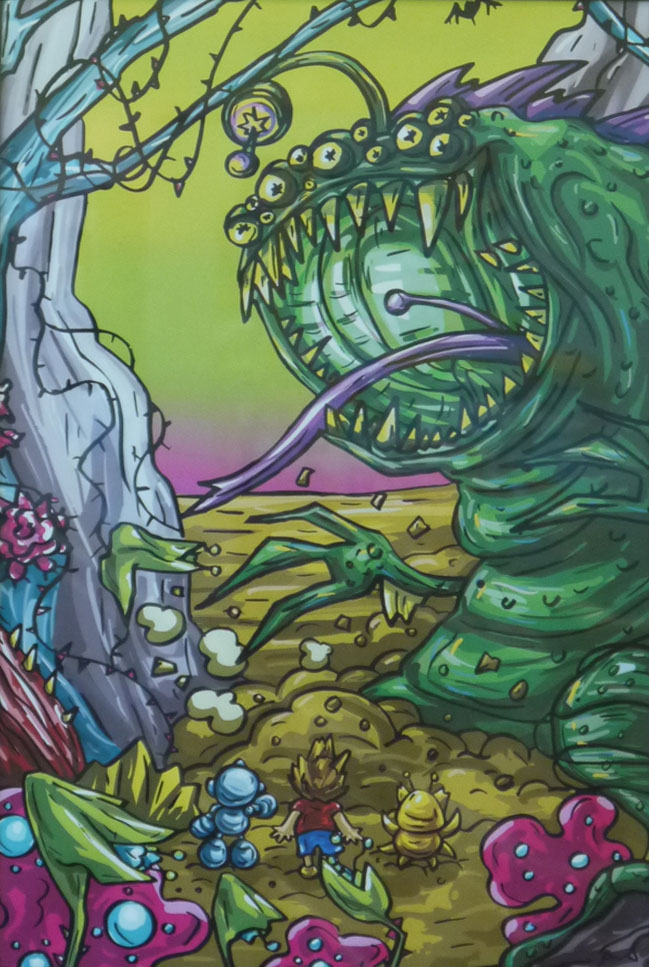 Emily Drouin
Emily Drouin
Q. Your art features some truly terrifying “Beasts.” Where do you get inspiration for these monsters?
A: Ever since I was a child, I've had a passion for illustration and storytelling, and love drawing monsters and robots! I am inspired by those countless trips to the library as a child, such books by Roald Dahl, Maurice Sendak, Chris Van Allsburg, Lewis Carroll, comics such as Calvin & Hobbes, Peanuts, Disney Adventures, and from Jim Henson movies and shows like Star Trek, Invader Zim, Futurama, Dr Who, Farscape and Stargate.
David McPhail
Q. Your two styles of illustrating, pen and ink and acrylics, are very different from each other. Do you find that one lends itself better to portraying “beauty” or “beasts”?
A. Nearly ALL of my books were done in pen and ink, and watercolor. A few are PENCIL and watercolor. Every few years, I feel the urge to "paint," to stand at an easel and apply gobs of paint to a canvas or board. Often, this desire to paint, coincides with a book illustration project that lends itself nicely to the medium. Edward and The Pirates, for example or Farm Boy's Year. When this "convergence" happens I get out my box of acrylics and I prepare some boards with a mix of white gesso, and Burnt Umber paint. I don't like to paint on a WHITE surface. It is much too stark for me. I prefer to paint on a mid-range tone, that way I can make SOME things darker and then bring the "lights" forward. When all is ready, I begin.
Unfortunately, a three or four year gap between "painting" projects, leaves me rusty, and unsure so it takes a while to get up to speed. Sometimes, by the time the book is finished, I feel that I'm just beginning to get the hang of it! But deadlines must be met! Of the nearly 200 books that I have illustrated, fewer than ten were done with "paint."
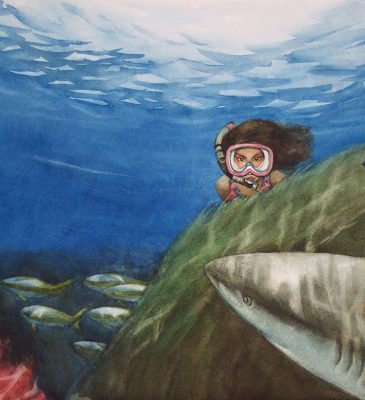
Yong Chen
Q. Most of your illustrations in the exhibit seem to focus on the “beauty” around us such as family, tradition, friends and even the underwater scene with the sinister looking shark is beautiful! Are there unexpected challenges when it comes to creating scenes of beauty?
A. Thank you for seeing my art in such perspective. Actually my goal of making art for children is to build connections of love, respect, curiosity and understanding between different cultures, and in large, between each individual person - us. I admit, I appreciate all the beauty around us, and perhaps that's why I naturally express how I see them in my paintings, but that is not the reason I make art. For example, the book Swimming with Sharks came to me when I didn’t understand much about sharks. After I read the manuscript, I upgraded my understanding of the universe, and how much we rely on the balance and health of the earth. I turned to passion to express my new ideal. Because I was afraid of sharks as I grew up, then I turned to respect the shark as an equal member of our living environment as a beautiful creature. When I worked on the illustrations for this project, I related these mixed feelings as I tried to communicate with my audience. If I just to create scenes of beauty, I may not have problems. But the trick is how to use beauty to educate my audience with messages so that they will accept, and that is not an easy task.
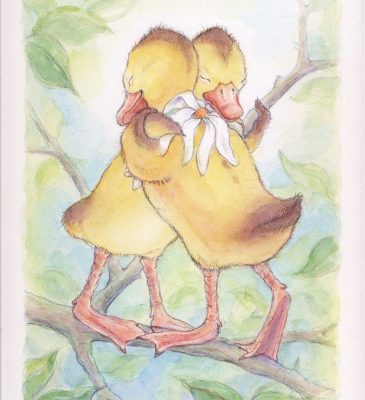 Teri Weidner
Teri Weidner
Q. For people who have never tried to illustrate a children’s book, it might seem like a simple process. But your work goes through many edits and alterations before being finalized. Do you ever find that the process is tiring or is it all a challenge you’ve come to embrace?
A. I think illustrating a picture book is a sort of marathon. It can be a long, difficult process drawing 32 pages, but the format offers an amazing opportunity to tell a visual story. I start all my books knowing that the first round of sketches will probably change dramatically by the time I start the final color artwork. I really enjoy the process of reworking and refining the imagery. Most of my books go through at least 5 rounds of sketches, some initiated by me, some initiated by the editor and art director. My experience with publishers has varied dramatically from book to book. I've had some publishers that gave me almost no feedback beyond "This looks great!", even when I knew my drawings were still far from adequate. In those cases, I've continued to work on improving the sketches on my own, until I was also happy with the results. My favorite way to work, though, is with editors and art directors who can help me hone the imagery, and who offer up creative and clever ways to improve my sketches and make the book stronger. Occasionally I don't agree with their comments (which can be frustrating) but after a day or two of stewing I can usually begin to see where they're coming from and use their ideas as a spring board to improve the illustrations. Even with criticism I think is way off base can be helpful, because it forces me to define which direction the visual story is going, and defend my choices. If I can't defend them, then the pictures really do need to be reworked! So yes, sometimes the editing process can be tiring, but over the years it's something I've come to embrace. If it leads to a better book, it's worth all the effort!
Sean Bixby
Q. You have such a fun variety of creatures in your illustrations from The Uncrossable Canyon books. I imagine your sketchbook as being filled with drawing experiments. Is the planning/sketching phase the most fun for you or do you prefer working on the final illustration?
A. The planning and sketching phase are really fun to me. For The Uncrossable Canyon series, the author had many fantastic characters written into the story who were fun to design. There were also many other characters that I was able to create myself. There is a lot of brainstorming and experimenting in the process of coming up with characters. For crowd scenes I filled them with some of my favorite animals, including my dog, my favorite monsters and dinosaurs. I even looked at sketchbooks from when I was young and redesigned some of the characters I had created years ago. I have to focus a lot during this phase as I am constantly drawing and revising the characters and also the layout of the final illustration. It’s once I have the drawing down on the final paper that I can start to relax a bit more. When I start to paint, my mind is a little more free and I can listen to music, movies or podcast. So with all this said I would say have no preference as each part of the process is unique and challenging in its own way.
Manchester School Learns about Nocturnal Animals
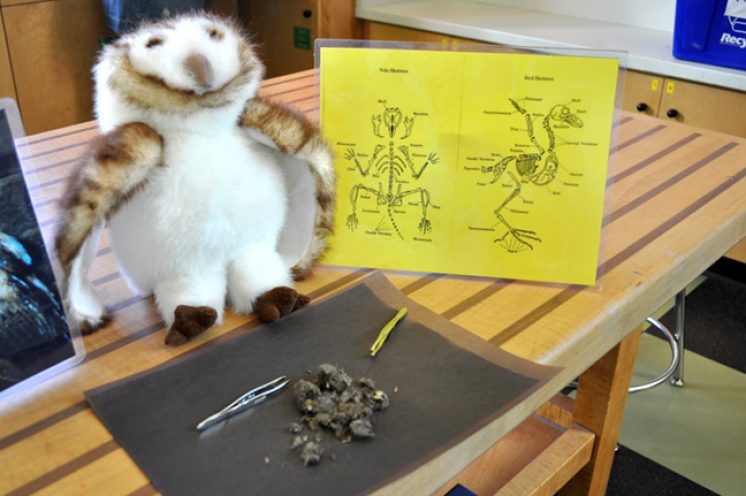
By Amanda Girard, Marketing Intern
Recently, the second grade classes of Smyth Road Elementary School in Manchester visited the Children’s Museum for a focused group visit. They had an amazing and fun time.
“I thought it would be a fun thing for their age,” said Mrs. Weilbrenner, their teacher.
The students definitely thought so. Many of them had visited the Museum before. One girl told me she had been here “like, 40 times!” But for other students, this was their first time experiencing the Children’s Museum. They marveled at the new exhibit outside of the building, Ascent or Descent, laughed as they tried on silly costumes in front of the green screen and launched objects into flight with “Build It, Fly It.”
When asked what their favorite exhibits were, the students gave many different answers. “Yellow Submarine!” one girl said. “The Mail Room!” another answered. “The Cave upstairs!” “The Music Wall!”
One thing’s for sure, no one was bored on this field trip.
But focused group visits to the CMNH are not just about exploring the exhibits, though there is plenty of time for that. Part of the group’s time is dedicated to an educational workshop led by Museum educators. The group can pick from fourteen different topics ahead of time to learn about, everything from mask-making to recycling to deep-sea creatures.
Smyth Road Elementary School decided to learn about nocturnal animals from educators Meredith Lamothe and Sarah Terry. The lesson took place in the Deep Sea Classroom, where all sorts of painted sea creatures can be spotted on the walls.
Activities in the lesson included listening to animal sounds and matching them with pictures of nocturnal creatures, learning about animals sense of hearing by concentrating on the sounds around them, and dissecting owl pellets.
The students were especially excited about the owl pellets. Exclaimations of “I got a skull!” and “It’s a hip!” were heard around the room during the activity. They were also given a chart so they could identify the animal bones they had found.
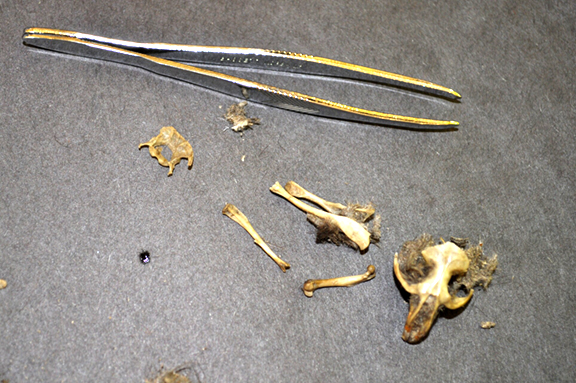
“The kids are always excited because it’s something new and special to them,” Museum educator Meredith Lamothe explained. “Being in school, they are used to having the same teacher and learning setting every day. It’s nice to be able to offer a new and enriching experience that gets students excited about learning.”
In the end, Smyth Road Elementary School left the Museum after a day of learning and a lot of fun!
If you are interested in the Museum’s focused group visits and would like to learn more, please visit this page. To book a visit, please contact Caitlynne Soule at caitlynne@childrens-museum.org or call 603-742-2002.
Maker Faire FAQs
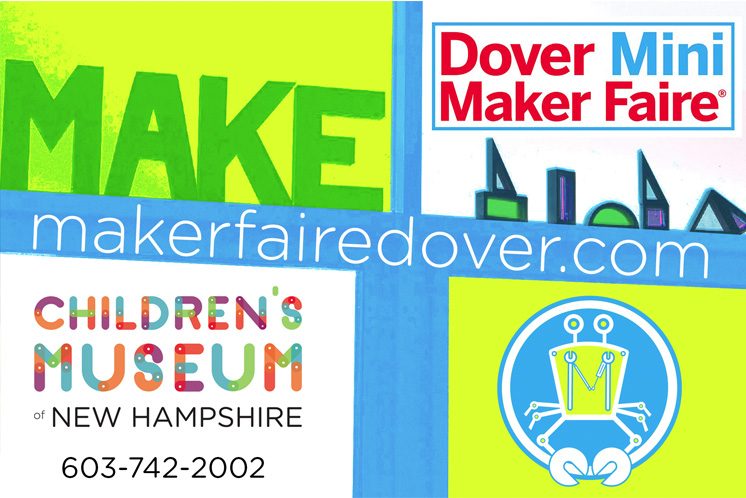
"What exactly is a 'Maker Faire'?"
We hear that question a lot when we are out and about, talking up our Dover Mini Maker Faire, coming up on Saturday, August 29. It's a deceptively hard question to answer! I usually say things like "It's a place where people who make things, engineer things, craft things, etc. can come together and show off their creativity."
"...So, there aren't any rides?"
Well, no. There aren't any rides. But we think it's just as fun. So to clear up some of the confusion about what visitors to a Maker Faire can expect, here's a handy list of frequently asked questions and our answers.
Q. What exactly is a Maker Faire?
A. Maker Faire is family-friendly festival of innovation, creativity and resourcefulness, and a celebration of the Maker movement. Part science fair, part county fair, and part something entirely new. Maker Faire is an all-ages gathering of tech enthusiasts, crafters, educators, tinkerers, hobbyists, engineers, science clubs, authors, artists, students and commercial exhibitors. All of these “makers” come to Maker Faire to show what they have made and share what they have learned.
Q. How did Maker Faire get started?
A. The Maker movement sparked at the first Maker Faire back in 2006 in the Bay Area. Since then, sponsorship of Maker Faire events from corporations has helped propelled this grassroots movement eastward like wildfire. The original Maker Faire event was held in San Mateo, CA and in 2012 celebrated its seventh annual show with some 800 makers and 110,000 people in attendance. World Maker Faire New York, the other flagship event, has grown in three years to 500+ makers and 55,000 attendees. Detroit, Kansas City, Newcastle (UK), and Tokyo are the home of “featured” Maker Faires (200+ makers).
Q. Why is it called Dover MINI Maker Faire?
A. Across the United States and the world, community-driven, independently organized Mini Maker Faires are now being produced. Dover Mini Maker Faire is independently organized and operated under license from Maker Media, Inc., and is the FIRST Mini Maker Faire in the state of New Hampshire.
Q. Are there rides?
A. No. There aren't any rides like you would see at a regular town fair. BUT, there are a ton of hands on activities and opportunities to explore new things. In addition to all the great Maker tables and demos, we'll be offering an opportunity to help us build a giant Jenga and there will be a grand finale involving coke and mentos "explosions!"
Q. So what exactly will I see at the Faire?
A. You will see lots of tables and booths outside in Henry Law Park with people displaying and demonstrating their creative talents. If you want to learn more about the individual vendors, we've compiled a great list of them over on our makerfairedover.com blog!
Q. How many people can I expect to see there?
A. The first year (2013) we had more than 1,200 people attend (300 of which were kids)!
Q. What does it cost?
A. If you buy tickets online before August 29, tickets cost $10 for anyone over 5 years of age. Kids ages 5 and younger get in for free. You can buy tickets at the door for $12.
Q. Is that all the money I'll spend while at the Faire?
A. If you are just looking around at all the great inventors and trying your hand at the different activities, then yes, that's all you'll spend. There are, however a few vendors who are selling their wares, and of course food will cost you extra. We will also have t-shirts for sale for a reasonable price. But your admission will get you into all areas of the Faire, including the Children's Museum.
Q. I'm a CMNH member. Do I get into the Faire for free?
A. Look for an email from us in early August with a Member discount code.
Q. Will there be food?
A. Yes! We have quite a few vendors who will be selling food.
Q. Can I bring my dog?
A. Yes, you may bring your dog to all outside locations (i.e. Henry Law Park), however with the exception of service animals, dogs are not permitted in the Museum or in One Washington Street Mill. However, for the safety and well being of our four-legged friends, we recommend you leave your pets at home. There will be loud noises, many moveable parts, and large crowds, all of which do not create a safe environment for pets.
Q. Where exactly is the Faire?
A. The Faire takes place in and around the Children's Museum, Henry Law Park, and One Washington Street Mill, which is directly behind the Museum.
Q. Is there parking?
A. Yes! Weekend parking is free throughout the city of Dover, but we suggest:
- Henry Law Avenue in front of the museum
- the River Street lot- Drive past the museum along Washington Street, veer onto Waters Street, then cross the bridge to River Street.
- The Orchard Street lot near the Post Office (accessed via Central Avenue or Chestnut Street)
- The Amtrak lot on Chestnut & Third Streets
- The Third Street lot next to Holy Rosary Credit Union
- The Portland Street lot
- The Library lot on Locust Street (across from the Police Station)
Q. What about handicap parking?
A. There are a few handicap parking spots on Washington Street right next to the museum, as well as in the TD Bank lot across the street.
If you find yourself saying "I have a question and I don't see the answer here," then feel free to email us at questions@childrens-museum.org and we'll do our best to clear things up for you. We hope you can make it to Maker Faire this year!
"Again!"
by Amanda Girard, Marketing Intern
We often hear that children, toddlers in particular, learn best through repetition. An article from Parents MagazineParents Magazine highlights that “while adults crave variety, a toddler needs repeated confirmation that things stay the same.” This may very well explain why your child delights in watching the same movie over and over again or asks for the same story every night at bedtime. And have you ever noticed how repetitive songs like “Old McDonald Had a Farm” and “B-I-N-G-O” are hits with young children? The early love of repetition explains it all.
So what may seem to us as boring or predictable is not only helping toddlers learn, it’s a lot of fun for them too. Knowing what’s going to happen next in the story or song is comforting.
So what does any of this have to do with the Children’s Museum? Many of our exhibits encourage this sort of repetitive learning. Pattern Palace gives kids an opportunity to discover different patterns and predict what colors and shapes come next. Our Pinscreen exhibit allows visitors to see imprints of their hands, faces, etc. over and over again.
Another important element of repetitive learning and the ways younger children learn is the need for variation. The same article from Parents Magazine uses the example that kids may start by simply banging a wooden block on a table and observing the sound it makes. Then, they may hit it harder and see what that does. They could also pick up a plastic hammer and hit the block that way to hear the difference. Though it may seem repetitive to us, to a child it is a new and exciting discovery.
CMNH supports this need for variation with our exhibits as well. The activities in our Muse Studio change every week to fit a new theme chosen by our museum educators. Build It, Fly It also promotes this kind of learning, where visitors can see how the way that they construct and launch different foam creations affects how their inventions fly. Kids get to tinker with their building methods to see what works best.
The Museum as a whole supports both repetitive and variation learning with its programs and exhibits. In general, kids and families can expect the museum to look similar to their last visit, with most of the same exhibits to interact with, providing a sense of comfort and memory for kids. But we work very hard to create an environment where they feel encouraged to explore and experiment in new ways.
So whether your child is in need of the comfort of repetition or the new world of variation, the Children’s Museum has something to offer everyone!
